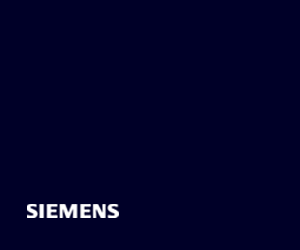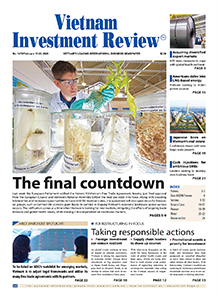Multinationals eye hospital segment
 |
| The hospital segment is the most profitable channel in the country for big corporations, photo Le Toan |
The Drug Administration of Vietnam under the Ministry of Health (MoH) earlier in March announced lists of original brand-name drugs treating non-communicable diseases, cardiovascular diseases, and cancer whose manufacturers are multinational corporations. The lists enable these pharmaceuticals to access procurement through bidding for hospital pharmacies.
One of the lists included Mylan Laboratories, Janssen Pharmaceutical, Daiichi Sankyo Europe, Haupt Pharma, and AndersonBrecon, among others. Several days earlier, a similar list named brands like Pfizer, Astellas Pharma Europe, Merck Sharp & Dohme, Bayer AG, Novo Nordisk Production, and Sanofi Winthrop Industries.
The hospital segment is now the most profitable channel in Vietnam, as it contributes about 75 per cent of total revenue of pharmaceuticals, while the rest comes from the over-the-counter segment.
Notable names like GSK, MSD, Sanofi, Roche, and Novartis are increasing their footprints in the local segment.
For instance, Novo Nordisk Vietnam is growing its pharmaceuticals supply of innovative treatments for chronic and rare diseases, with diabetes and obesity among its key therapeutic areas. This year, it has also been enhancing public understanding of the rising burden of obesity in Vietnam, which is experiencing a 38 per cent increase in overweight and obesity rates, according to the MoH. Obesity is also linked to the top five leading causes of death in Vietnam: hypertension, cardiovascular disease, diabetes, cancer, and chronic respiratory disease.
Roche Pharma Vietnam, Sandoz, and MSD are focusing on cancer by strengthening cooperation with local hospitals and medical associations. Specifically, Roche Pharma in 2024 held a series of events on increasing access to innovative therapies for lung cancer and breast cancer patients.
Similarly, MSD also works with hospitals in Hanoi and Ho Chi Minh City on updates on the effectiveness of immunotherapy for early -stage triple-negative breast cancer.
Meanwhile, Sandoz and Vietnam National Cancer Hospital have signed MoUs to improve standards of care for oncology patients. Sandoz, which received its Vietnam licence in 2024, is pioneering access to patients through affordable generic and biosimilar treatments in areas including oncology, anti-infectives, and a wide array of other therapeutic areas.
According to the MoH’s Preventive Medicine Department, Vietnam currently has around 22 million people aged 18-69 with chronic diseases. Therefore, the demands for pharmaceuticals for such treatments will continue to increase.
Pharma expert Hoa Duong said, “Cardiovascular diseases, diabetes, cancer treatment, and others are causing a big burden which requires costly and long-time treatment. The majority of pharmaceuticals for treatment of the diseases are being supplied by multinationals. Meanwhile, local pharma firms focus on generic drugs. Thus, the big corporations hold the majority share of the segment.”
Another expert, Hai Ngo, added, “The demand for drugs related to cardiovascular disease, liver cancer, and diabetes will continue to increase due to changes in dietary habits, environment pollution, and others. Multinationals will keep expanding in Vietnam in this regard.”
According to Tititada Academy, pharmaceutical revenues are expected to reach $7.51 billion by the end of 2025, accounting for about 1.78 per cent of GDP and one-third of total healthcare spending.
The hospital segment is projected to account for an increasing proportion of total pharmaceuticals sales due to improvements in the quality of medical facilities, expansion of social health insurance and national demographics. This channel is forecast to reach $5.75 billion by 2026, accounting for just over three-quarters of total drug sales.
What the stars mean:
★ Poor ★ ★ Promising ★★★ Good ★★★★ Very good ★★★★★ Exceptional
Related Contents
Latest News
More News
- Takeda supports health resilience amid climate change challenges (December 18, 2025 | 12:39)
- Mondelez Kinh Do - a chapter of purpose-led leadership in Vietnam (December 18, 2025 | 09:44)
- VNPAY services receive the highest-level PCI DSS international security certificates for six consecutive years (December 17, 2025 | 23:47)
- PPL extends its reach into ASEAN (December 17, 2025 | 15:44)
- Over 600 BUV graduates meeting quality benchmarks across triple quality assurance levels (December 17, 2025 | 13:00)
- HEINEKEN Vietnam partners with Ho Chi Minh City Traffic Police on road safety drive (December 17, 2025 | 09:42)
- BUV and China’s CSCSE sign MoU to boost educational cooperation (December 17, 2025 | 08:00)
- PVT Logistics honoured with ‘Fast Enterprise Award’ at APEA 2025 (December 16, 2025 | 18:22)
- Empowering Sustainable Data Centers with Smart Infrastructure Solutions (December 16, 2025 | 13:59)
- Vietjet wins gold ESG transport sustainability award in Taiwan (China) (December 13, 2025 | 22:03)

 Tag:
Tag:






















 Mobile Version
Mobile Version